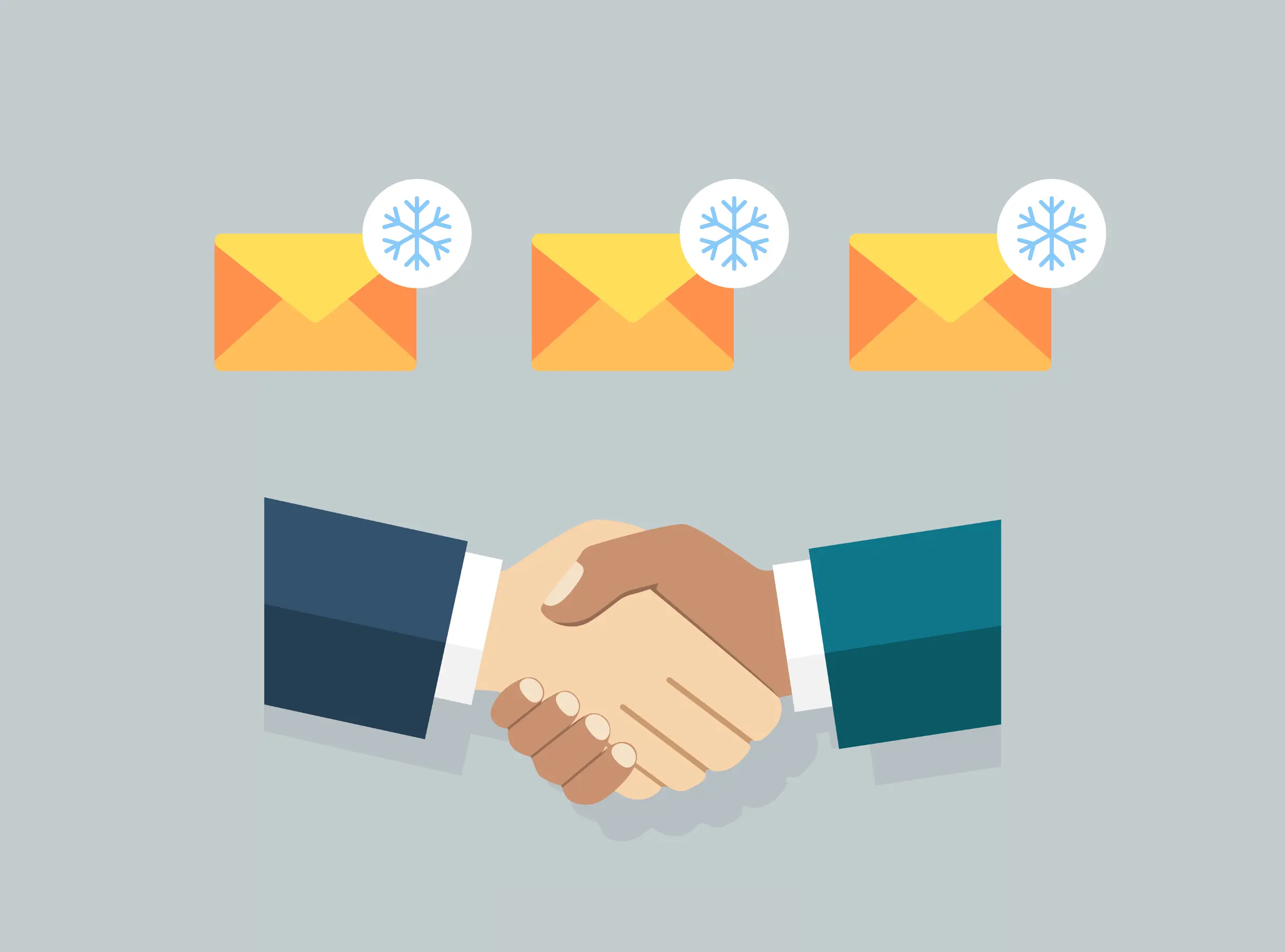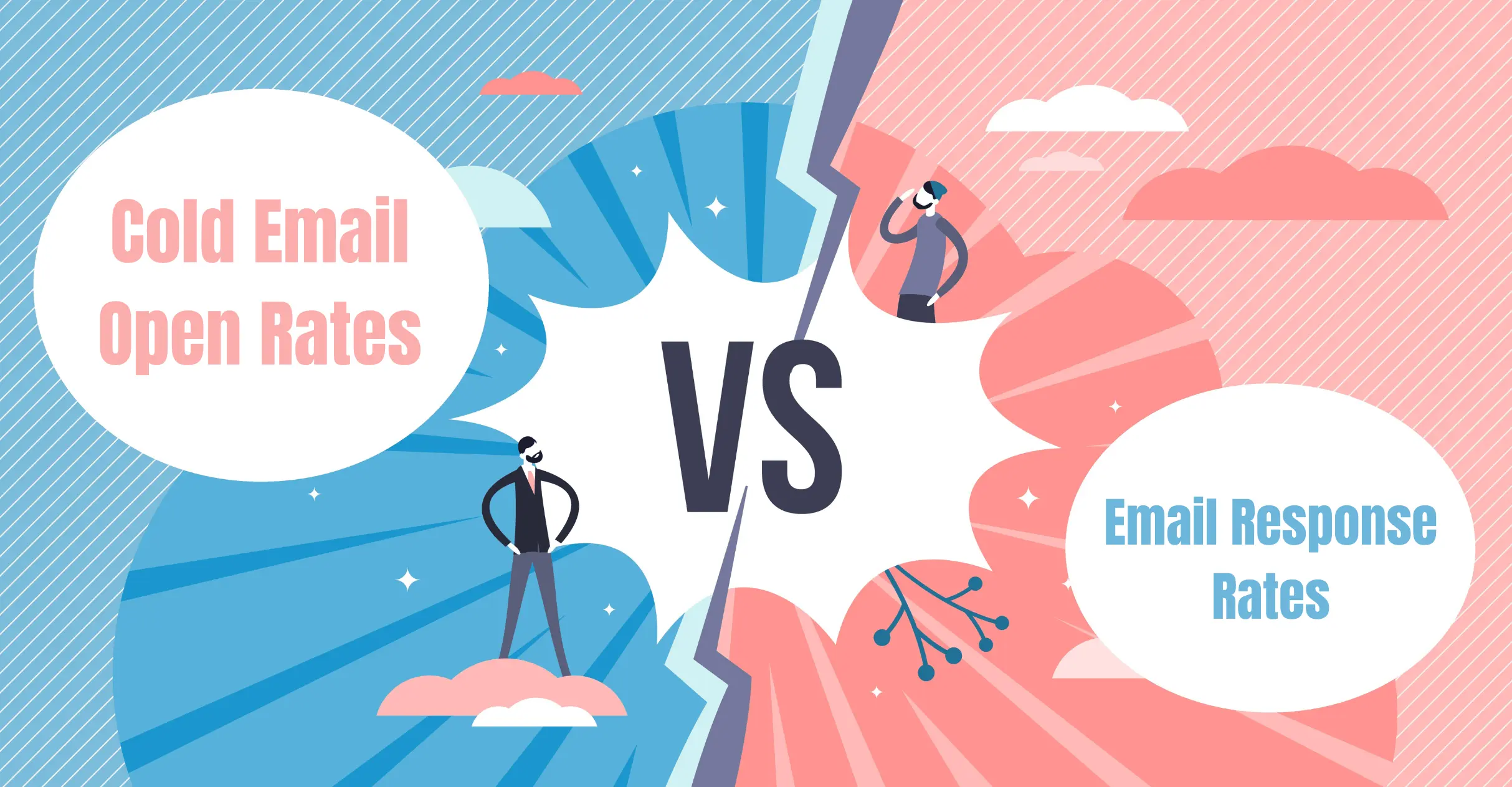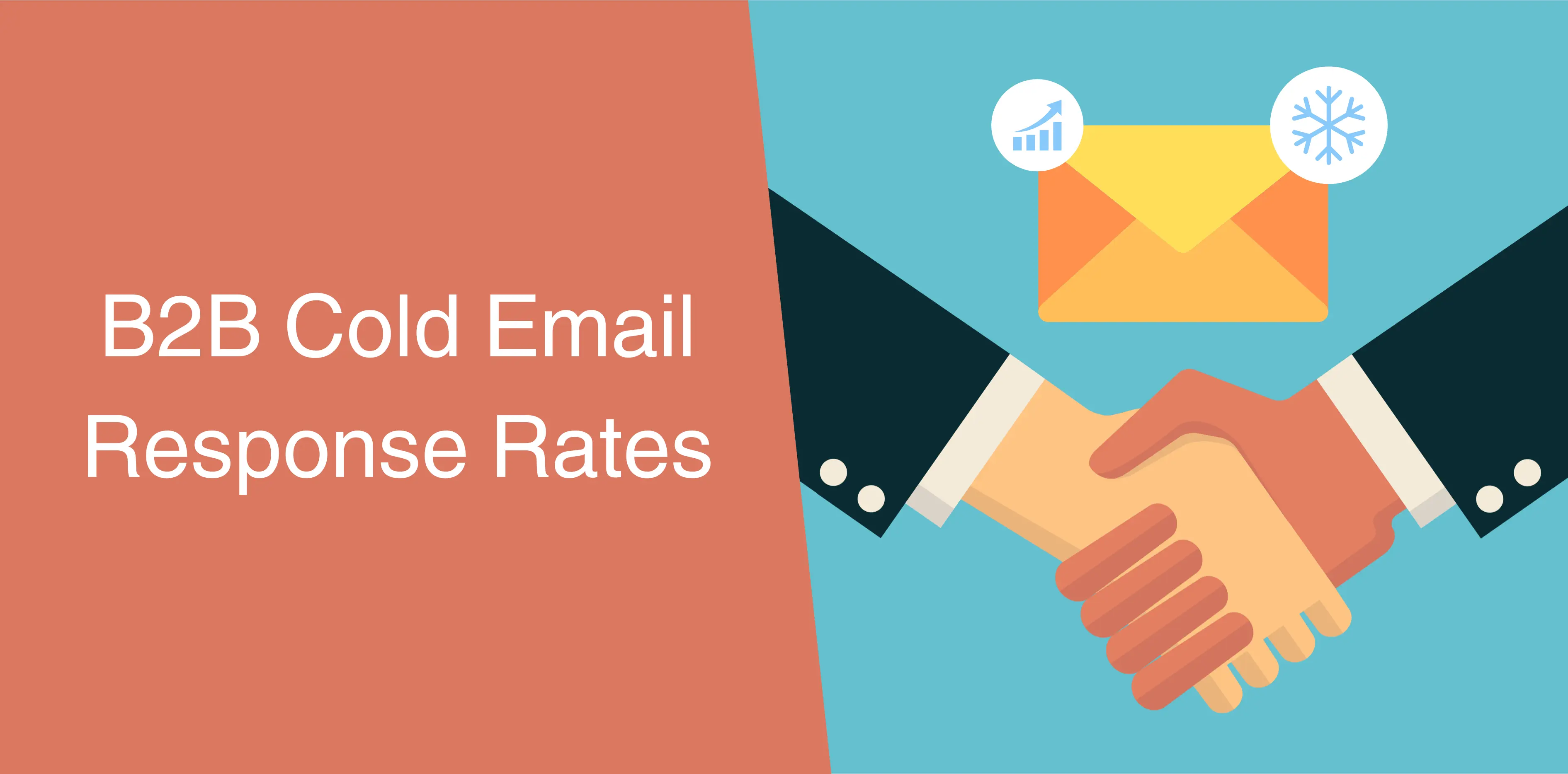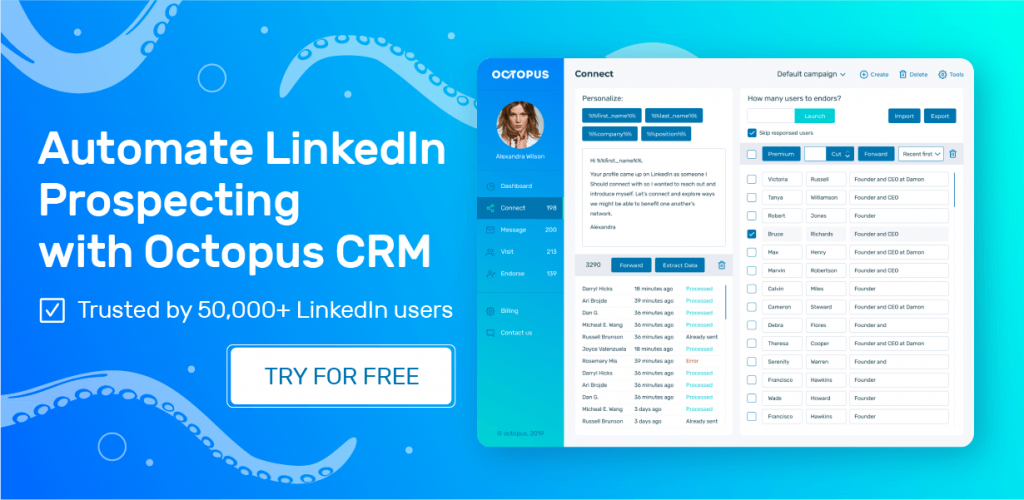Cold emailing B2B is an effective strategy for reaching new clients. Unfortunately, making your recipients reply to your cold emails can be challenging. Your cold email campaign’s success is dependent on several variables. They include the caliber of your email subject line and signature, as well as your outreach strategy and sales funnel.
Many people require assistance with B2B cold emailing despite its significance. This guide will discuss increasing your B2B cold email response rate. You can increase your chances of success and meet your marketing objectives by implementing the suggestions and techniques in this article.
What Is Cold B2B Email? 
It is an outreach marketing strategy in which you send unsolicited emails to potential corporate clients. The emails are personalized, concise, and tailored to the recipient’s interests and needs. The goal is to generate leads, build relationships, and increase sales.
B2B cold email campaigns aim to target specific individuals or businesses. The product or service offered may interest these particular firms or individuals. Correctly executing this approach can help companies to expand their reach. It can also enable them to connect with potential clients cost-effectively.
However, it’s essential to avoid spamming or sending irrelevant emails that can damage a company’s reputation.
The average cold email response rate is usually typically about 1%.The kind of email you send can significantly impact the response rate. High response rates of up to 5%, 20%, or even over 40% are possible with some sales emails.
Generally, the higher the response rate, the better. A good indication of a high response rate is if it is about half of the open rate.
How to Calculate Cold Email Response Rates?
Calculating the response rate of your cold emails is one way to measure the success of your campaign.
To determine this rate, divide the number of unique email responses you received by the total number of successfully sent emails. Multiply the result by 100 to get the percentage of people who responded to your cold email.
For example, if you sent 100 cold emails and received five individual responses, the response rate would be 5% (5/100 * 100). This formula allows you to measure the success of your cold email campaign and make necessary changes to improve your results. Remember that a higher response rate generally indicates a more successful campaign.
Why Do Cold Email Response Rates Matter?
It is one of the key metrics that indicates your email campaign’s success. When you send cold emails, you want a response from potential customers or clients. A higher response rate means a greater level of interest in your offer. This, in turn, increases your chances of converting recipients into customers.
Cold emails generally aim to generate interest and engagement. Tracking the response rate helps to determine if this goal is being achieved.
Tracking your response rate can measure your email campaign’s effectiveness. You can make necessary adjustments to improve your results accordingly.
Analyzing data and experimenting with different strategies can optimize your cold email campaign. Besides, it also helps boost your success rate.
Factors That Impact Your B2B Cold Email Response Rate
Before sending a cold email, there are four key factors to consider that can make a significant difference in your response rate.
Neglecting any of these factors could lead to a low response rate, while optimizing them can increase your response rate from 1% to 50% or more.
Making necessary adjustments before hitting the send button is essential. Paying close attention to these factors can help ensure the success of your email outreach.
Deep Personalization
Deep personalizing your email with relevant information about the recipient can increase the chances of a response. This is because it helps make a connection and encourages engagement.
Use the recipient’s name in the subject line to customize your communication. To catch their attention and establish a connection, reference them or their place of employment in the email body.
Essentially, it’s about incorporating anything to inform recipients that your email was created exclusively for them.
Customizing your emails per individual requirements is fantastic, so the recipient feels valued.
Why Is this Cold Emailing Strategy Effective?
The fact that you took the time to tailor your outreach message to the recipient’s needs is evident in personalized emails. This can help prove your genuine interest in building a relationship.
And you’ll be able to communicate with them more successfully, increasing your likelihood of getting a response.
Your Industry and Offering
The relevance of your offering to the recipient’s industry and needs can impact the response rate. It shows that you understand their specific challenges and can offer a solution. On the other hand, if your offering is irrelevant, the recipient may dismiss it as spam or a waste of time.
Therefore, it’s essential to research and tailor your message to the recipient’s industry and needs. This can increase the chances of a positive response and ultimately lead to a successful business relationship.
The Intended Call-to-Action
A clear and specific call-to-action can make it easier for recipients to respond to your email.Including a clear and particular call-to-action in your B2B cold email can increase the response rate. This is because it makes it easier for recipients to know what action to take after reading your message.
Without a clear call-to-action, the recipient may not know what you expect from them and may not respond. Your call-to-action should be specific and relevant to the recipient’s needs, so they can see the value in taking the action you suggest.
Call-to-action examples include scheduling meetings, requesting more information, or downloading a resource.
Your Timing

The time and day you send your email can affect its visibility and response rate. Sending your email at a time when the recipient’s inbox is overflowing can cause it to get lost and go unseen.
Similarly, if you send your email on a day when the recipient is likely to be busy or out of the office, they may not see it until much later or not at all. Consider the recipient’s time zone and work schedule to maximize visibility and response rate.
For example, emailing early or late in the day can increase visibility. Additionally, sending it mid-week may increase the chances of a response.
Incorporating these factors into your email strategy can increase the chances of getting a response.
How to Improve Your Average Cold Email Response Rates
Want to increase your chances of success in cold email campaigns and generate more leads? You can implement a few simple email personalization strategies.
By making minor adjustments to your subject lines and follow-up techniques, you can improve how people respond to your cold emails.
Here are six tips that can help you optimize your cold email campaigns.
Craft a Great Subject Line
Crafting a great subject line is crucial for improving your average cold email response rate. The subject line should be short and clear but also give the recipient an idea of what your email is about.
It’s essential to make it relevant to the content of your email so the recipient knows exactly what they’re getting into. Avoid using vague or overly promotional language, which can turn people off. Keep it concise and to the point to make an excellent first impression.
Keep the Email Brief
Stick to the essential points and keep your email short and to the end. Long emails are likely to get ignored. Keeping your cold email brief and to the point is essential to increase your chances of getting a response.
People are busy, and long emails can be overwhelming and may get ignored. Stick to the essential points and avoid including unnecessary information. Use short paragraphs and bullet points to make the email easier to scan.
Include Personalized Content
Personalization may enhance communication and give the recipient a sense of worth.Use their name and firm, and adapt your message to fit their circumstances. Personalization can boost response rates and make the recipient feel appreciated.
You can gain their trust and credibility by demonstrating that you have done your homework and comprehend their needs. The recipient may be more receptive to your message and more likely to act if you use personalized content.
Focus On the Prospect’s Needs
Your email should highlight their needs and how your solution can assist them.Writing an effective cold email requires focusing on the needs of the prospect. Your email should highlight their difficulties and explain how your solution can assist in resolving them.
You can gain confidence and credibility by demonstrating your understanding of their demands. You can increase the likelihood of receiving a response by emphasizing the advantages of your solution and how it can benefit the recipient.
Keep the receiver in mind and consider how you may assist them in improving your email’s persuasiveness.
Share Relevant, Eye-catching Data
Providing pertinent and eye-catching material is an excellent method to increase the persuasiveness of your cold email.
Use statistics, case studies, and other pertinent data to substantiate your assertions and show the advantages of your solution.
Visually appealing data can help the receiver pay attention and remember your email. You can establish credibility and raise your chances of receiving a response by backing up your statements with evidence.
Make your solution more persuasive for the recipient by using facts to show the worth of your offering.
Leverage Personalized Videos
Personalized videos are a powerful way to stand out in your cold email. Keep your videos short and focused on the recipient’s needs.
Videos can help build a stronger connection with the recipient and make your email more memorable. By putting a face to your message, you can increase the likelihood of getting a response.
Personalized videos can help showcase your personality and build trust with the recipient. Use videos to add a personal touch to your cold email and increase your chances of success. Always end an email with your personalized signature to improve brand retention and contact information.
Cold Email Open Rates vs. Email Response Rates

Cold email open rate shows who has opened your email. Email response rates show who responded to your email. Response rates are more important than available rates because they increase email engagement and interest. Good response rates vary greatly, from 5% to 40%. A response rate that’s about half of the open rate is reasonable. The average available rate is between 40% to 60%
For clarification, open rates reveal how many people opened your email, but it doesn’t show whether they read it. Response rates, on the other hand, show the number of people who responded to your email, indicating their level of interest in your message.
The best response rates are higher than the average 1% response rate for cold emails. While some sales emails can achieve up to 40% response rates, others may only get a 5% response rate.
A good rule of thumb is to aim for a response rate of about half of the open rate, which shows your audience a decent level of engagement. You must invest in email deliverability tools to ensure your emails land in the primary inbox. As email services like Google get more efficient at blocking unsolicited emails, it is imperative to make use of technology and improve your email deliverability rate.
Conclusion
You may be familiar with B2B cold email response rates by now. These rates can vary greatly depending on various factors such as industry, audience, and messaging.
However, there are some general guidelines to follow to increase the likelihood of receiving a response. Keep your emails short, personalize your message to the recipient, and focus on providing value.
Remember, the ultimate goal of a cold email is to start an email conversation, not necessarily to close a sale. So, don’t be discouraged by a lack of immediate response; keep testing and refining your approach.
Apart from optimizing content, you should also focus on email hygiene to remove invalid and uninterested recipients from your list. This can significantly boost your email response rate and improve a campaign’s success.

